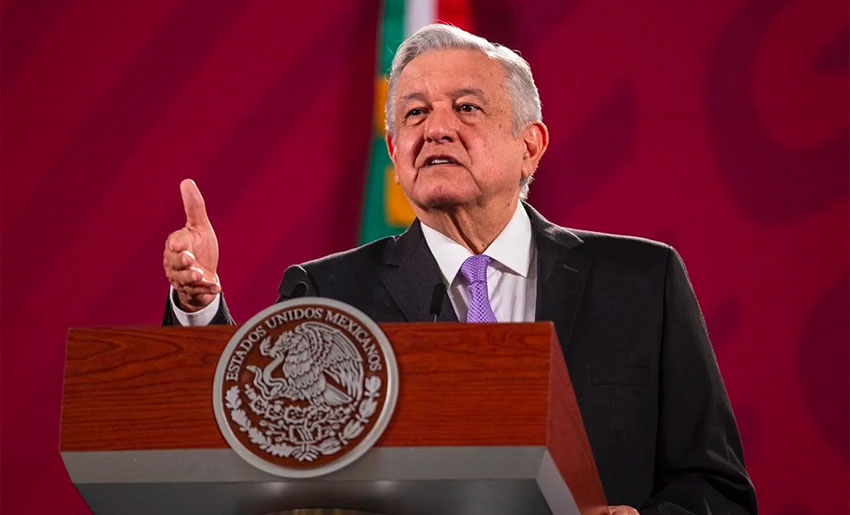The Mexican economy recorded its worst result ever in the second quarter of the year as coronavirus restrictions forced the closure of nonessential businesses for the majority of the period.
GDP shrank 18.9% between April and June compared to the same period last year, according to preliminary data published by the national statistics agency Inegi on Thursday.
The contraction is more than twice as big as the economy’s previous worst result, an 8.6% slump recorded in the second quarter of 1995.
As disheartening as it is, the second-quarter downturn was not unexpected as nationwide restrictions shut down all nonessential businesses for the entirety of April and May and the government urged citizens to stay at home.
Economists surveyed by Bloomberg had forecast a 19.4% drop in economic activity in the second quarter, while several banks predicted contractions of 18-20%.
Data shows that the industrial sector, including manufacturing, construction and mining, shrank 26% between April and June compared to the same period of 2019 while the services sector, including commercial activity, transportation, financial and media, fell 15.6%.
Output of the primary sector, including agriculture and fishing, declined by a much more modest 0.3% compared to the April-June period of 2019.
The economy-wide second quarter contraction was the fifth consecutive quarterly decline for the Mexican economy, meaning that President López Obrador has only overseen growth in one quarter since he took office in December 2018 promising to boost GDP by an average of 4% during his six-year term.
The 18.9% slump follows a 2.2% annual contraction in the first quarter of 2020. Compared to the January-March period, GDP declined 17.3% in the second quarter, according to preliminary data. Inegi will publish final second-quarter results on August 26.
Referring to the year-over-year decline, Pantheon Macroeconomics economist Andrés Abadía wrote in a note to clients that “this is a horrendous number, but hardly a surprise.”
“The deterioration of the labor market has been severe and the pandemic is far from controlled,” he added.

Indeed, as the economy sank in the second quarter, unemployment shot up, with more than 12 million formal and informal sector jobs lost in April and May alone, according to the Bank of México.
Central Bank Deputy Governor Jonathan Heath said earlier this month that a wider measure showed that more than 34 million people are in need of work, while as many as 16 million Mexicans may have fallen into extreme poverty between February and May, according to academics.
López Obrador asserted Thursday that the economy had reached its lowest point, telling reporters at his regular news conference that “the worst is behind us.”
“Our strategy has worked. Now we are recovering,” he said.
But Mexico appears likely to record its worst economic result since the Great Depression in 2020, with no end to the coronavirus pandemic in sight. The International Monetary Fund is currently predicting that GDP will decline 10.5% while some analysts are even more pessimistic.
Carlos Serrano, chief economist at BBVA in Mexico City, said the bank predicts that “it will take until the end of 2024 to get back to the level of GDP we had at the end of 2019,” while Alberto Ramos at Goldman Sachs said “we certainly do not share the optimism of a V-shaped recovery, particularly given the conservative/hawkish monetary stance and the timid and poorly targeted fiscal stimulus.”
López Obrador has refused to increase public debt to support the economy amid the coronavirus crisis, telling large companies that they should bail themselves out if they encounter choppy economic waters.
Loans have been offered to small businesses but they are so insignificant – 25,000 pesos or about US $1,100 – that many haven’t even bothered to apply.
Exports recovered strongly in June, surging 75.6% compared to the previous month, but are still below pre-pandemic levels.
Mexico recorded its biggest ever trade surplus last month but that result was helped by a 22% annual decline in imports due to a weak, coronavirus-battered domestic economy.
Complicating the chances of a recovery in the second half of the year is that coronavirus cases and deaths continue to mount at a steady pace, with 408,449 of the former and 45,361 of the latter as of Wednesday. The real number of cases and deaths are widely believed to be much higher.
The risk of coronavirus infection is currently “red light” maximum in 18 of Mexico’s 32 states and “orange light” in the other 14, according to the federal government’s “stoplight” map.
Varying levels of economic restrictions apply across the country and the recovery for tourism, one of Mexico’s biggest money earners, is expected to be a long and slow process as many people remain wary of traveling.
Uncertainty and a lack of investor confidence could also hamper any chance of a swift recovery, with changes to energy sector laws of particular concern to many foreign and private companies operating in that sector.
United States Ambassador Christopher Landau said last month that it’s not a good time to invest in Mexico, while Gabriela Siller, head of economic and financial research at Banco Base, said there is a “nearly 90%” chance that the country’s sovereign rating will be downgraded below investment grade by the end of 2020 or early next year.
Source: El Financiero (sp), Bloomberg (en), Financial Times (en)